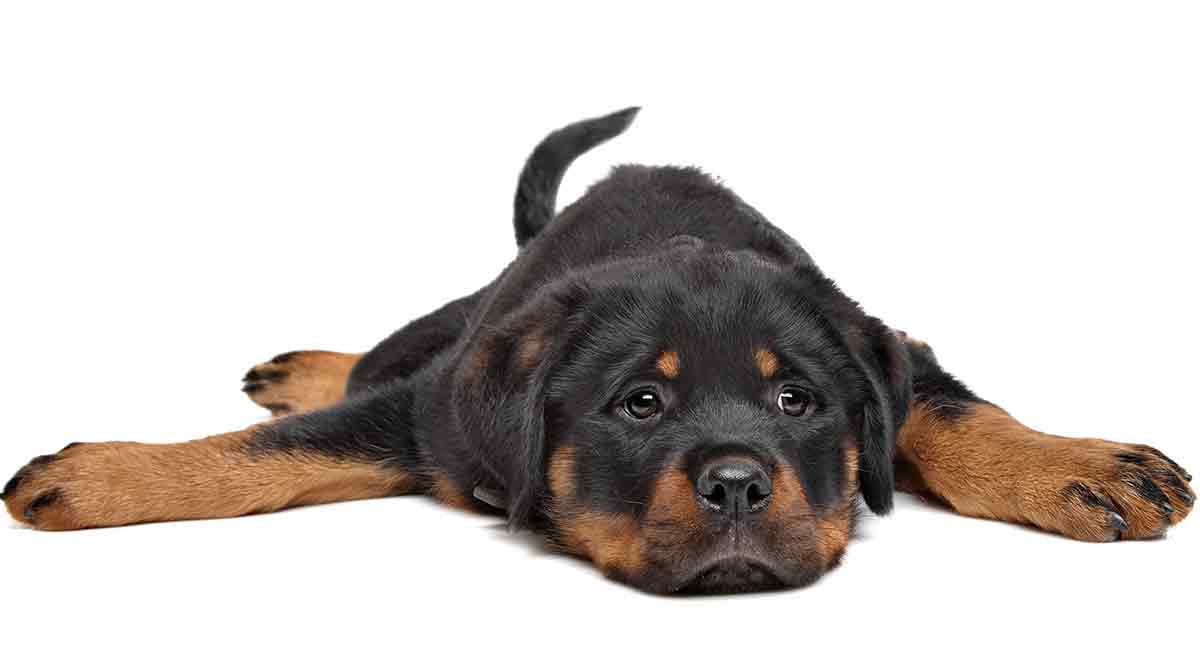When it comes to brushing your Rottweiler’s coat, we recommend starting at the dog’s head, brushing the top of the head and around the ears, down the neck, chest, and front legs. Then brush in one long stroke from the head toward the tail, then down the sides, and finish with the rear legs.
Others prefer starting at the feet and working upward. Many groomers discourage backward brushing—brushing against the direction of hair growth—because it can damage the coat, and some dogs find the process uncomfortable and annoying.
Either way, be sure to brush both the top coat and undercoat. Brushing only the top coat can result in painful mats and tangles that are difficult, if not impossible, to comb out. If a matted coat gets wet, the moisture is trapped near the skin, which can cause hot spots—circular lesions that are usually inflamed, raw, moist, and very painful. Remember, your Rottweiler’s skin is sensitive, despite his brawn!
Brush gently; don’t tug or pull, because this can hurt. Be careful not to brush the skin itself with a slicker or wire brush, because this can create nicks, scratches, and even welts.
Regardless of which method you choose, once-a-week brushing is usually sufficient. However, a 5-minute, once-a-day once-over with a soft brush or glove is ideal to keep your Rottweiler’s coat glossy and gorgeous and to keep shedding to a minimum. You can finish the coat and add shine by rubbing it down with a soft towel and spraying or rubbing on a coat oil.
As you brush, pay particular attention to the condition of his coat. A Rottweiler’s coat is a mirror reflection of his health. Check to see:
- Is your Rottweiler’s coat healthy and glossy? Or is it dull, brittle, and lackluster?
- Is his skin dry and flaky?
- Does his skin have a bad smell or that unmistakable doggie odor?
- Do you see bare spots where hair is missing?
Any of these conditions could be a sign of inadequate grooming, internal illness, parasite infestation, or an inadequate diet. When in doubt, a veterinarian can diagnosis the problem and recommended suitable treatments.
Tools to Use
For most Rottweilers, a soft bristle brush, flat slicker brush, grooming glove, rubber curry brush, or shedding blade—a flexible saw-toothed device generally used for horses—is sufficient for whisking away pieces of debris, dust, dirt, and dead hair.
Despite their seemingly carefree appearance, Rottweilers shed more than one might think. The amount of shedding, which is a natural process in which strands of hair die, fall out (shed), and are replaced by new hairs, varies according to the dog, the season, and climatic conditions.
Most Rottweilers shed heavily in the spring and fall. Brushing helps to whisk away these dead hairs, promote and distribute natural oils, and bring out the shine and natural luster in a dog’s coat.

